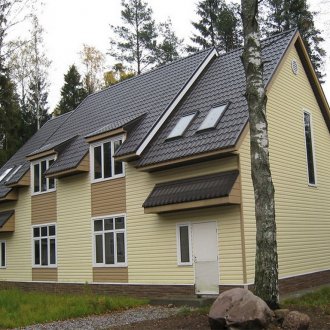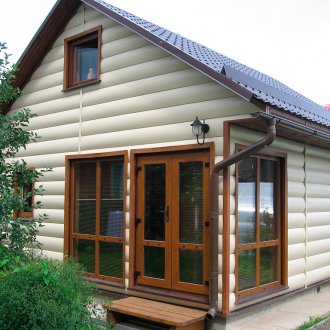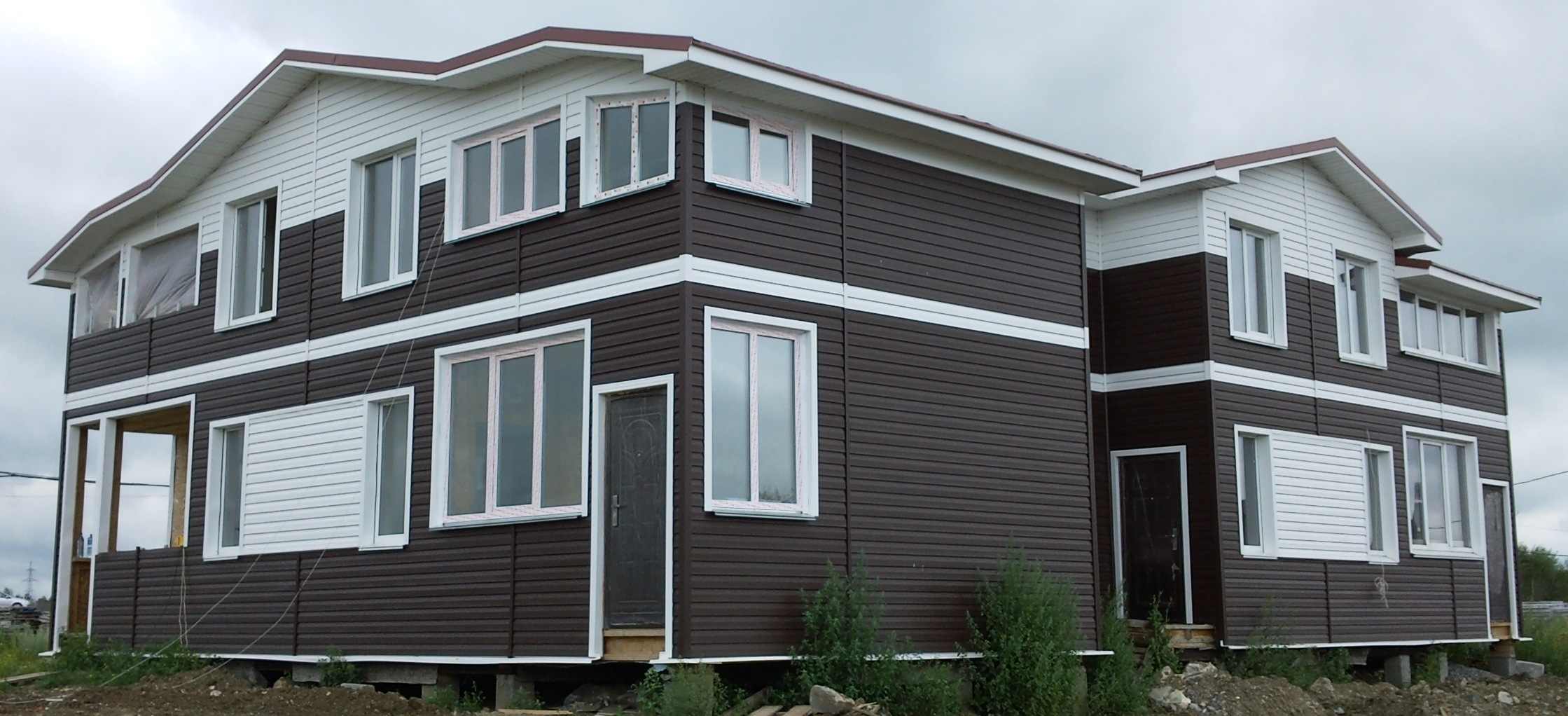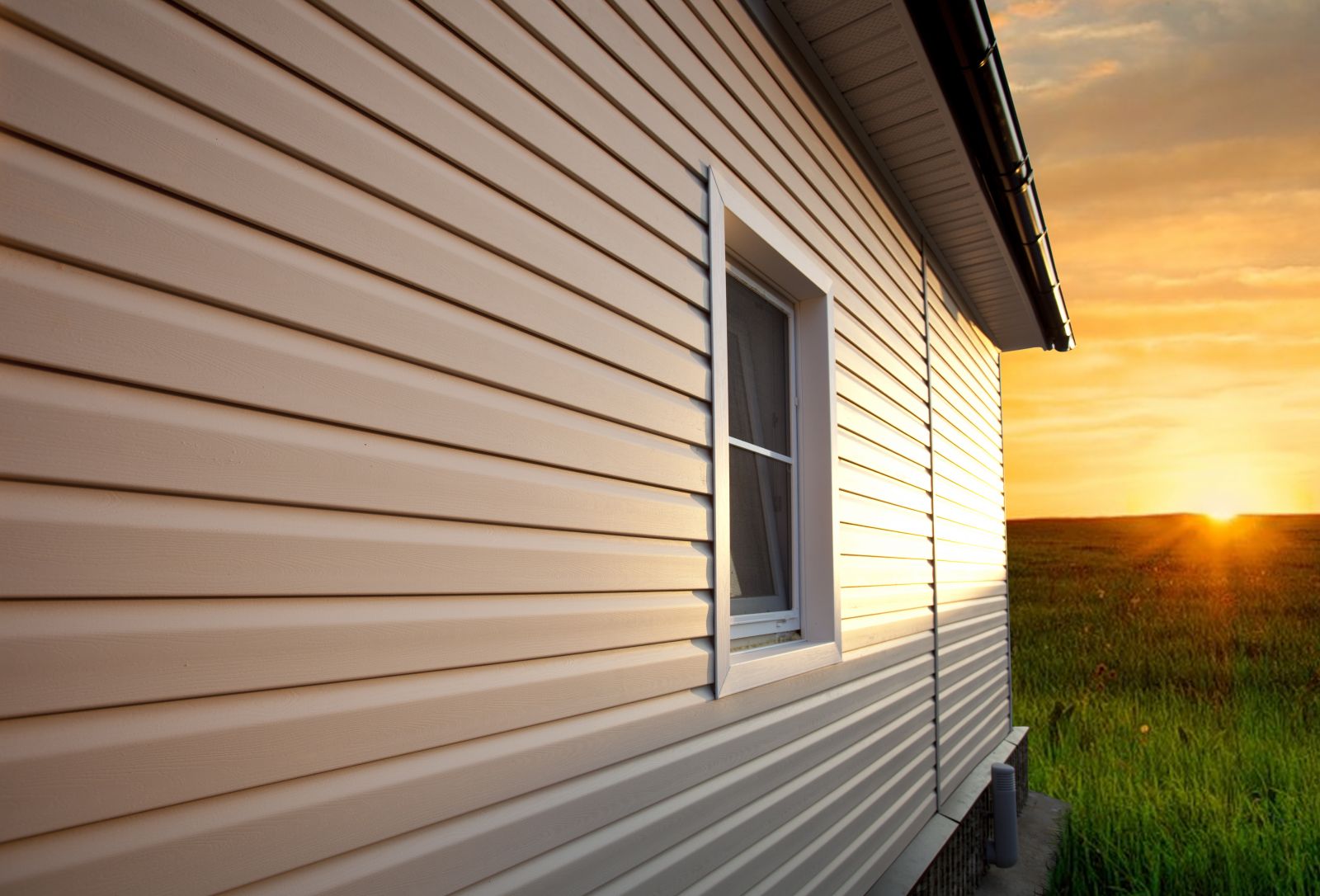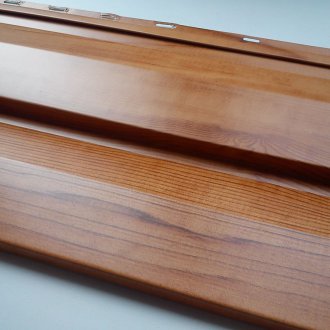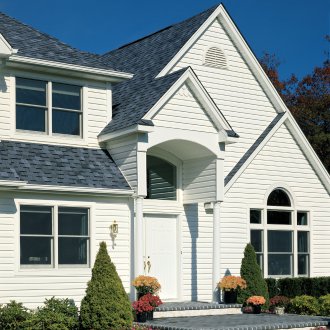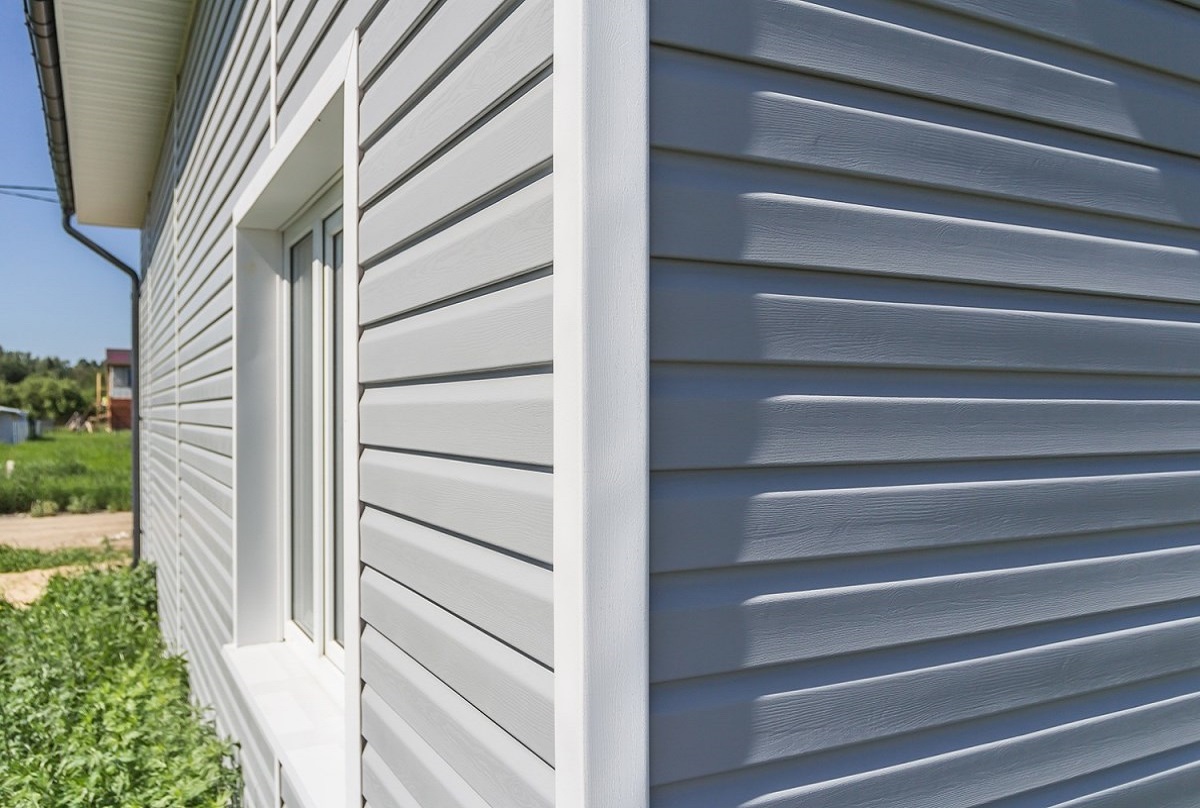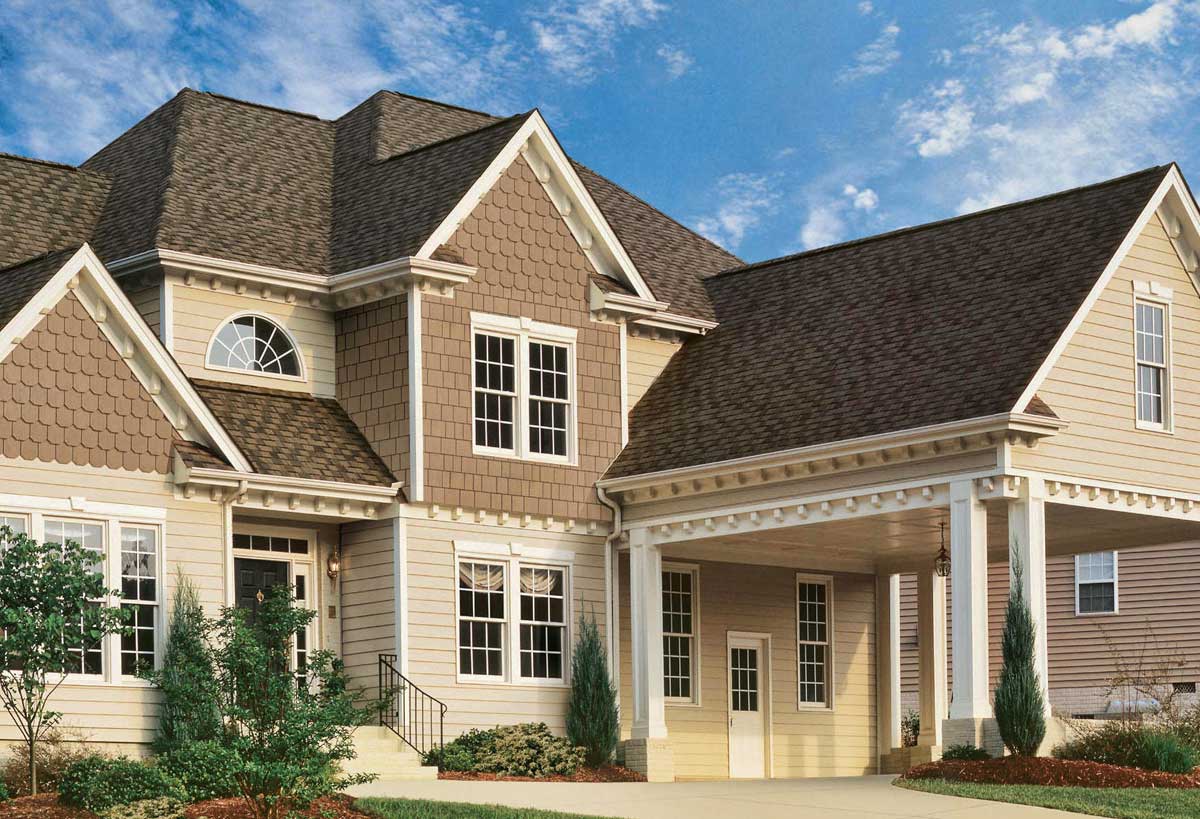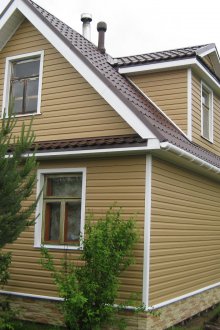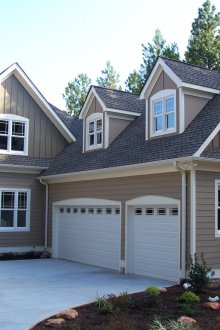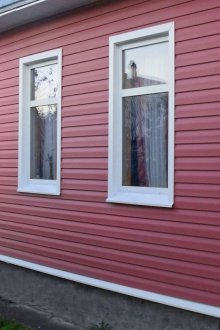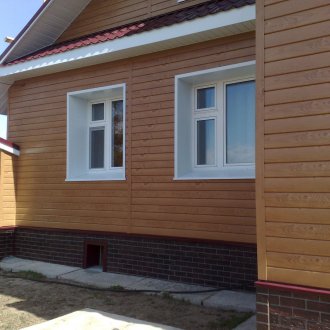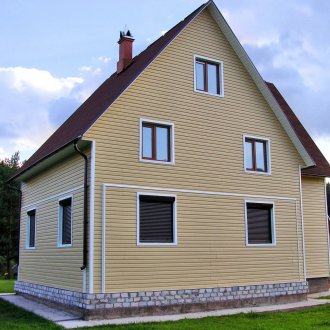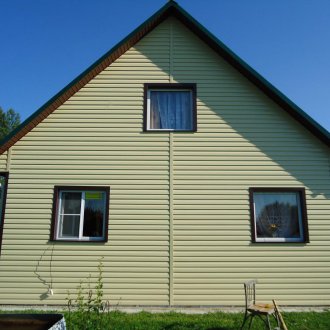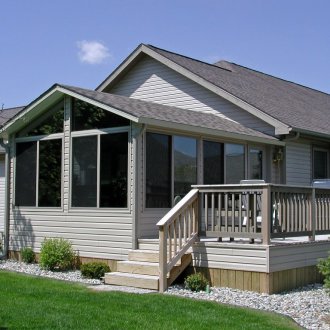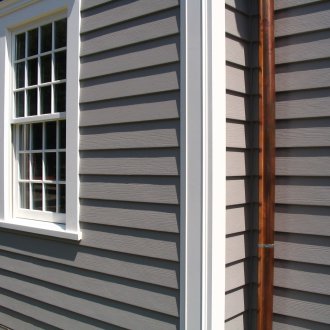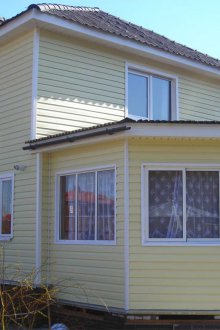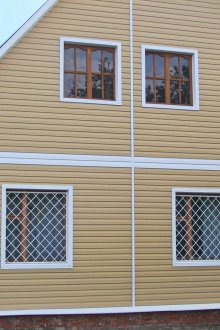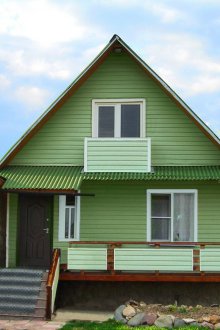Ship siding: characteristics, scope and types (20 photos)
Content
Siding - special panels of the same size, used for external decoration of walls of buildings and structures. The panels are equipped with a lock in the form of a latch, a perforated edge and holes for fastening and easy installation. This is the most popular facing material, which is designed to perform the following functions:
- protect the walls from the influence of weather factors - rain, snow, wind, sun;
- decorate surfaces, improving their aesthetic perception.
The panels that visually imitate the surface of the timber or the plank sheathing of the sides of the ships are called siding "shipboard". When you look at the slats from the side, you can clearly see the profile in the form of a double bend, resembling waves incident on each other. They fit perfectly together, forming a monolithic surface.
Ship siding is widely used for external wall cladding:
- private residential buildings and utility buildings;
- public facilities;
- industrial facilities.
The material used for the manufacture of panels determines the presence of two types of siding: vinyl and metal. The texture of the surface of the skin under the shipboard can be smooth or embossed and can accurately reproduce such natural materials as wood or stone.
Metal siding
The material for the manufacture of the metal appearance of the panels are sheets of galvanized steel. In order to protect from the effects of various atmospheric factors, a subsequent polymer coating is carried out. Metal products have important qualities:
- withstand temperature extremes;
- resistant to mechanical stress;
- not afraid of fire;
- Do not fade in the sun;
- used for cladding buildings with incomplete shrinkage.
Metal does not change its properties at low temperatures, so you can work with it in the winter. The listed quality of the material determines the operational characteristics of the finished product. Metal panels have higher technical and operational properties than vinyl analogues. Metal siding is resistant to mechanical stress: it does not break, although it can bend or get a dent with the possibility of subsequent restoration.
The price of metal siding depends on the class of coating, its protective properties and resistance to fading. The surface of the panels is painted in two ways:
- applying a protective and decorative polymer layer - which makes it possible to obtain 8 colors;
- powder method - allows not to limit the color gamut, but significantly increases the price of products, increasing it by 20%.
The width of the metal siding panel is 26 cm, and the length can reach 6 m. This size is convenient for cladding large areas. On the one hand, this is a plus, and on the other, a disadvantage of this material: the considerable specific gravity and dimensions of the finished product limit the possibility of its use.
Vinyl siding
Vinyl siding shipboard made of PVC with the addition of modifiers. Vinyl is a biologically inert and sufficiently durable moisture resistant material. It is not combustible, but it deforms under the influence of temperatures and collapses with strong directional impacts.To improve the performance of the finished panels, lamination is performed by applying an acrylic film. This technique protects products from burnout, increases durability and frost resistance.
A universal finishing material - vinyl siding “ship beam” - has a wide range of shades and textural options: it can be smooth, repeat the pattern of the bark of wood, stone, brick. A wide selection of siding is offered on the building materials market, which allows you to create unique options for facades. For residential buildings, tree textures are most often used, and for cladding non-residential objects - smooth panels of various colors.
The modern material from which siding is made belongs to a high fire safety class. The panels do not burn, do not melt and reliably protect buildings from the effects of adverse factors and climatic shock.
Both metal and vinyl siding are equally demanded among finishing materials, but, despite the obvious advantages of both, we can highlight some of the advantages of vinyl over metal siding:
- affordable cost - lower than that of metal panels;
- a greater thermal insulation coefficient - it heats up and cools less depending on the season - you can touch such a surface in the heat and cold without fear;
- due to its lower weight, it is suitable for cladding walls not designed for heavy loads;
- Convenience in transportation and storage.
Knowing the characteristics of ship siding from different materials, it is not difficult to make a choice in favor of one or another type of finishing material.
Advantages over other types of facade decoration
Ship timber is considered one of the most convenient profiles for installation and subsequent maintenance. Among the other advantages of this type of finishing material, the following general positive aspects of vinyl and metal siding “shipboard” can be noted:
- optimal ratio of high quality and reasonable price;
- thoughtful geometric shape of the panels;
- rich colors for any design project;
- creating a solid surface with tight joints;
- high resistance to external influences due to stiffeners;
- the possibility of additional insulation and waterproofing of the facades.
All of these qualities allow you to make a choice in favor of this type of decoration of the facade of buildings and structures.
Ways to use siding
The technology of paneling is not difficult and does not require professional skills. Only strict adherence to the sequence of work when installing the siding according to the instructions from the manufacturer is required.
Facade preparation:
- vertical inspection and lathing with a metal profile or wooden bars;
- if required, insulation and waterproofing are carried out: insulation material (mineral wool) is placed between the battens of the battens and covered with a membrane from dampness;
- one more lath for ventilation and as a base for sheathing is vertically installed on top;
- after insulation work, the walls are re-checked by level.
Panel Installation:
- starts from the bottom of the building, strictly horizontally;
- previously marked the surface of the entire facade;
- at the bottom, the starting bar is attached, at the top - the final bar;
- the panels cling to the lock one after another;
- the top of each subsequent panel is attached to the wall with nails or self-tapping screws;
- the last panel is installed in the upper final strip.
Profiles are attached to each other without excessive tension. When working in the winter, the dimensions of technological gaps are increased to 10 mm. Hats of nails or self-tapping screws are not thrown as far as the stop, and between the strips they leave room for expansion in case of temperature differences. This assembly method makes it easy and reliable to install all parts.
Siding under the shipboard will transform the tiled building for the better. In the course of further operation, there will be no need for additional special treatment and painting of walls sheathed with ship timber. To maintain the facades in working and clean condition, it is enough to wash them with water with a hose once a year - and they will reliably last for more than a dozen years.
